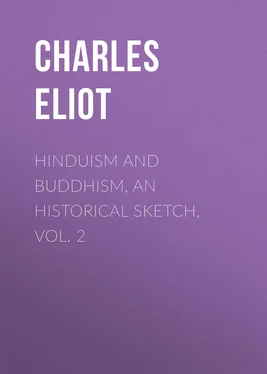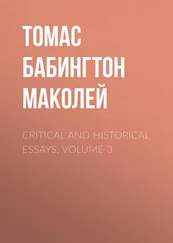Charles Eliot - Hinduism and Buddhism, An Historical Sketch, Vol. 2
Здесь есть возможность читать онлайн «Charles Eliot - Hinduism and Buddhism, An Historical Sketch, Vol. 2» — ознакомительный отрывок электронной книги совершенно бесплатно, а после прочтения отрывка купить полную версию. В некоторых случаях можно слушать аудио, скачать через торрент в формате fb2 и присутствует краткое содержание. Жанр: foreign_religion, Философия, Религиозная литература, foreign_psychology, foreign_antique, foreign_prose, на английском языке. Описание произведения, (предисловие) а так же отзывы посетителей доступны на портале библиотеки ЛибКат.
- Название:Hinduism and Buddhism, An Historical Sketch, Vol. 2
- Автор:
- Жанр:
- Год:неизвестен
- ISBN:нет данных
- Рейтинг книги:4 / 5. Голосов: 1
-
Избранное:Добавить в избранное
- Отзывы:
-
Ваша оценка:
- 80
- 1
- 2
- 3
- 4
- 5
Hinduism and Buddhism, An Historical Sketch, Vol. 2: краткое содержание, описание и аннотация
Предлагаем к чтению аннотацию, описание, краткое содержание или предисловие (зависит от того, что написал сам автор книги «Hinduism and Buddhism, An Historical Sketch, Vol. 2»). Если вы не нашли необходимую информацию о книге — напишите в комментариях, мы постараемся отыскать её.
Hinduism and Buddhism, An Historical Sketch, Vol. 2 — читать онлайн ознакомительный отрывок
Ниже представлен текст книги, разбитый по страницам. Система сохранения места последней прочитанной страницы, позволяет с удобством читать онлайн бесплатно книгу «Hinduism and Buddhism, An Historical Sketch, Vol. 2», без необходимости каждый раз заново искать на чём Вы остановились. Поставьте закладку, и сможете в любой момент перейти на страницу, на которой закончили чтение.
Интервал:
Закладка:
His worship prevailed not only in India but in Nepal, Tibet, China, Japan and Java. Fa-Hsien states that he was honoured in Central India, and Hsüan Chuang that there were stupas dedicated to him at Muttra. 44 44 Hsüan Chuang also relates how he assisted a philosopher called Ch'en-na (=Diṅnâga) and bade him study Mahayanist books.
He is also said to have been incarnate in Atîsa, the Tibetan reformer, and in Vairocana who introduced Buddhism to Khotan, but, great as is his benevolence, he is not so much the helper of human beings, which is Avalokita's special function, as the personification of thought, knowledge, and meditation. It is for this that he has in his hands the sword of knowledge and a book. A beautiful figure from Java bearing these emblems is in the Berlin Museum. 45 45 It is reproduced in Grünwedel's Buddhist Art in India . Translated by Gibson, 1901, p. 200.
Miniatures represent him as of a yellow colour with the hands (when they do not carry emblems) set in the position known as teaching the law. 46 46 Dharmacakramudra.
Other signs which distinguish his images are the blue lotus and the lion on which he sits.
An interesting fact about Mañjuśrî is his association with China, 47 47 For the Nepalese legends see S. Levi, Le Nepal , 1905-9.
not only in Chinese but in late Indian legends. The mountain Wu-t'ai-shan in the province of Shan-si is sacred to him and is covered with temples erected in his honour. 48 48 For an account of this sacred mountain see Edkins, Religion in China , chaps. XVII to XIX.
The name (mountain of five terraces) is rendered in Sanskrit as Pancaśîrsha, or Pancaśikha, and occurs both in the Svayambhû Purâṇa and in the text appended to miniatures representing Mañjuśrî. The principal temple is said to have been erected between 471 and 500 A.D. I have not seen any statement that the locality was sacred in pre-Buddhist times, but it was probably regarded as the haunt of deities, one of whom—perhaps some spirit of divination—was identified with the wise Mañjuśrî. It is possible that during the various inroads of Græco-Bactrians, Yüeh-Chih, and other Central Asian tribes into India, Mañjuśrî was somehow imported into the pantheon of the Mahayana from China or Central Asia, and he has, especially in the earlier descriptions, a certain pure and abstract quality which recalls the Amesha-Spentas of Persia. But still his attributes are Indian, and there is little positive evidence of a foreign origin. I-Ching is the first to tell us that the Hindus believed he came from China. 49 49 See I-tsing, trans. Takakusu, 1896, p. 136. For some further remarks on the possible foreign origin of Mañjuśrî see below, chapter on Central Asia. The verses attributed to King Harsha (Nanjio, 1071) praise the reliquaries of China but without details.
Hsüan Chuang does not mention this belief, and probably did not hear of it, for it is an interesting detail which no one writing for a Chinese audience would have omitted. We may therefore suppose that the idea arose in India about 650 A.D. By that date the temples of Wu-t'ai-Shan would have had time to become celebrated, and the visits paid to India by distinguished Chinese Buddhists would be likely to create the impression that China was a centre of the faith and frequented by Bodhisattvas. 50 50 Some of the Tantras, e.g. the Mahâcînakramâcâra, though they do not connect Mañjuśrî with China, represent some of their most surprising novelties as having been brought thence by ancient sages like Vasishṭha.
We hear that Vajrabodhi (about 700) and Prajña (782) both went to China to adore Mañjuśrî. In 824 a Tibetan envoy arrived at the Chinese Court to ask for an image of Mañjuśrî, and later the Grand Lamas officially recognized that he was incarnate in the Emperor. 51 51 J.R.A.S. new series, XII. 522 and J.A.S.B. 1882, p. 41. The name Manchu perhaps contributed to this belief.
Another legend relates that Mañjuśrî came from Wu-t'ai-Shan to adore a miraculous lotus 52 52 It is described as a Svayambhû or spontaneous manifestation of the Âdi-Buddha.
that appeared on the lake which then filled Nepal. With a blow of his sword he cleft the mountain barrier and thus drained the valley and introduced civilization. There may be hidden in this some tradition of the introduction of culture into Nepal but the Nepalese legends are late and in their collected form do not go back beyond the sixteenth century.
After Avalokita and Mañjuśrî the most important Bodhisattva is Maitreya, 53 53 Sanskrit, Maitreya; Pali, Metteyya; Chinese, Mi-li; Japanese, Miroku; Mongol, Maidari; Tibetan, Byams-pa (pronounced Jampa). For the history of the Maitreya idea see especially Péri, B.E.F.E.O. 1911, pp. 439-457.
also called Ajita or unconquered, who is the only one recognized by the Pali Canon. 54 54 But a Siamese inscription of about 1361, possibly influenced by Chinese Mahayanism, speaks of the ten Bodhisattvas headed by Metteyya. See B.E.F.E.O. 1917, No. 2, pp. 30, 31.
This is because he does not stand on the same footing as the others. They are superhuman in their origin as well as in their career, whereas Maitreya is simply a being who like Gotama has lived innumerable lives and ultimately made himself worthy of Buddhahood which he awaits in heaven. There is no reason to doubt that Gotama regarded himself as one in a series of Buddhas: the Pali scriptures relate that he mentioned his predecessors by name, and also spoke of unnumbered Buddhas to come. 55 55 E.g. in the Mahâparinibbâna Sûtra.
Nevertheless Maitreya or Metteyya is rarely mentioned in the Pali Canon. 56 56 Dig. Nik. XXVI. 25 and Buddhavamsa, XXVII. 19, and even this last verse is said to be an addition.
He is, however, frequently alluded to in the exegetical Pali literature, in the Anâgata-vaṃsa and in the earlier Sanskrit works such as the Lalita-vistara, the Divyâvadâna and Mahâvastu. In the Lotus he plays a prominent part, but still is subordinate to Mañjuśrî. Ultimately he was eclipsed by the two great Bodhisattvas but in the early centuries of our era he received much respect. His images are frequent in all parts of the Buddhist world: he was believed to watch over the propagation of the Faith, 57 57 See e.g. Watters, Yüan Chwang , I. 239.
and to have made special revelations to Asaṅga. 58 58 See Watters and Péri in B.E.F.E.O. 1911, 439. A temple of Maitreya has been found at Turfan in Central Asia with a Chinese inscription which speaks of him as an active and benevolent deity manifesting himself in many forms.
In paintings he is usually of a golden colour: his statues, which are often gigantic, show him standing or sitting in the European fashion and not cross-legged. He appears to be represented in the earliest Gandharan sculptures and there was a famous image of him in Udyâna of which Fa-Hsien (399-414 A.D.) speaks as if it were already ancient. 59 59 He has not fared well in Chinese iconography which represents him as an enormously fat smiling monk. In the Liang dynasty there was a monk called Pu-tai (Jap. Hotei) who was regarded as an incarnation of Maitreya and became a popular subject for caricature. It would appear that the Bodhisattva himself has become superseded by this cheerful but undignified incarnation.
Hsüan Chuang describes it as well as a stupa erected 60 60 The stupa was apparently at Benares but Hsüan Chuang's narrative is not clear and other versions make Râjagṛiha or Srâvasti the scene of the prediction.
to commemorate Sâkyamuni's prediction that Maitreya would be his successor. On attaining Buddhahood he will become lord of a terrestrial paradise and hold three assemblies under a dragon flower tree, 61 61 Campa. This is his bodhi tree under which he will obtain enlightenment as Sâkyamuni under the Ficus religiosa . Each Buddha has his own special kind of bodhi tree.
at which all who have been good Buddhists in previous births will become Arhats. I-Ching speaks of meditating on the advent of Maitreya in language like that which Christian piety uses of the second coming of Christ and concludes a poem which is incorporated in his work with the aspiration "Deep as the depth of a lake be my pure and calm meditation. Let me look for the first meeting under the Tree of the Dragon Flower when I hear the deep rippling voice of the Buddha Maitreya." 62 62 Record of the Buddhist religion , Trans. Takakusu, p. 213. See too Watters, Yüan Chwang , II. 57, 144, 210, 215.
But messianic ideas were not much developed in either Buddhism or Hinduism and perhaps the figures of both Maitreya and Kalkî owe something to Persian legends about Saoshyant the Saviour.
Интервал:
Закладка:
Похожие книги на «Hinduism and Buddhism, An Historical Sketch, Vol. 2»
Представляем Вашему вниманию похожие книги на «Hinduism and Buddhism, An Historical Sketch, Vol. 2» списком для выбора. Мы отобрали схожую по названию и смыслу литературу в надежде предоставить читателям больше вариантов отыскать новые, интересные, ещё непрочитанные произведения.
Обсуждение, отзывы о книге «Hinduism and Buddhism, An Historical Sketch, Vol. 2» и просто собственные мнения читателей. Оставьте ваши комментарии, напишите, что Вы думаете о произведении, его смысле или главных героях. Укажите что конкретно понравилось, а что нет, и почему Вы так считаете.












